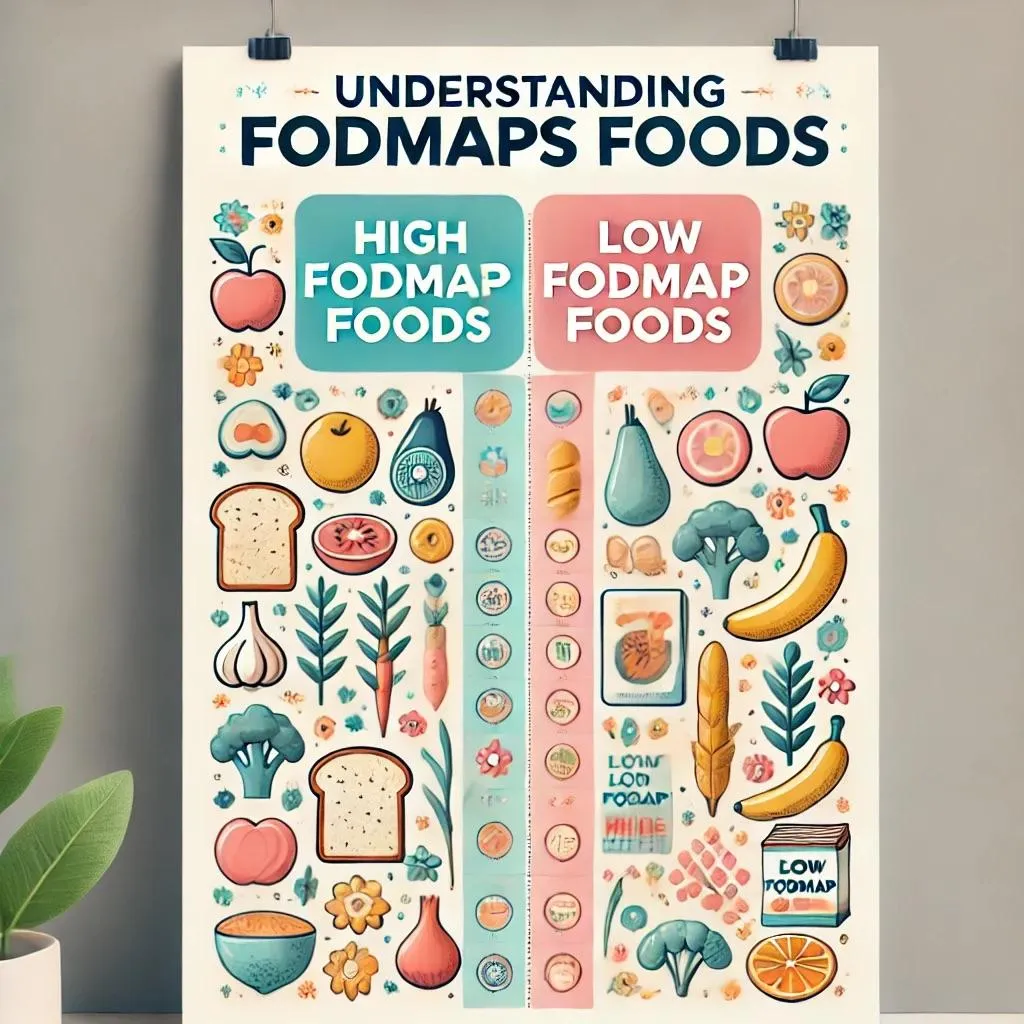Welcome To Your Personalised Nutrition Plan
200 Food Intolerance Hair Scan
A full Personalised food plan for only £49
This is a 200 food intolerance test. It is done with highly advanced bioresonace equipment. We use a hair sample that you must send us. It DOES NOT use blood. Once purchased we will email you the information we require and how to take the hair sample to send to us. Please give us 10 days turn around time for the results which we will email you. Usually we are faster than this!
Once purchased you will receive instructions on sending the sample to us.
Welcome To Your optimum metabolism
Your personalised nutrition plan
What's Body BioTyping?
Discover the hormonal secrets your body is hiding—find out the foods that exacerbate your unique profile.
Unveil the trendy diets that will truly transform you and those that maybe damaging you despite the current trend! You see..
One diet DOES NOT fit all.
And this isn't a one-size-fits-all menu; it's a bespoke nutrition blueprint tailored to your body shape, emotional eating patterns, and appetite—all revealed in this enlightening quiz.
Why do some diets work wonders for a few but flop for others?
With us, learn which foods and diet habits will elevate your well-being, which are neutral, and which to avoid.
Fine-tune your meal ratios and eating frequency for peak performance. Rev up your metabolism with a tailored macro-nutrient balance just for you, and find out the real deal on snacking.
You'll then be able to tweak your meals so they are in tune with your metabolism. Understand your body's needs and redefine your diet with us.
Want to feel:
Satisfied after and meal and not craving more food or sugar even though you feel full?
Want to lose weight without calorie restriction or hard dieting? Rather using a tailored health food plan that suits your metabolism.
Or maybe the opposite and you need to gain weight.
Want to feel emotional more stable rather than feeling shakey, jittery or "hangry"because you ate the wrong foods?
Want more energy as you are now supplying your body with the correct foods that suit your individual metabolism needs.
A Food Plan Specifically for YOU
What's Body BioTyping?
Have you noticed how we are all different shapes and sizes?
Or how foods affect everyone differently?
Or raher how foods affect your body differently to your friends?
How some people gain weight easily and others seem to eat loads and not gain any weight?
Or how you gain weight in particularly areas? Like tummy, bottom, hips, thighs?
Body Typing can explain these questions and give you tips towards healthy eating and lifestyle changes that are specific to your shape.
Did you know that particular areas of your body are sensitive to different hormones and therefore your body shape gives a clue to hormone imbalances? This works for men and women.
Once you know this hormone you can understand which foods to avoid as they will further create hormone imbalances. These hormone imbalance can cause weight gain

We want you to feel more of these:
Want to feel great?
✅ More energy overall
✅ A long lasting, balanced energy after a meal
✅ Full and satisfied after a meal but not bloated and “stuffed”.
✅ Emotionally happy and satisfied after a meal
✅ Losing weight if you want to
✅ Gaining weight if you want to
✅ No cravings for sugar, salt or fats after meal
✅ Improved mental awareness and no brain fog
And less of these:
❌ Energy slumps or crashes
❌ Not hungry or craving in-between meals or even shortly after meal
❌ Feeling too full and bloated after meals rather than satisfied
❌ Not getting blood sugar crashes after meals
❌ Not getting anxiety, worry or “hangry”
❌ Gaining weight without actually eating much

Is your metabolism fast or slow?
And there's even more...
What food Ratio's suit your metabolism
Is it possible to refine your ideal eating plan even more? Yes it is!
Hopefully you have done your Body BioTyping food plan and found your ideal food ratios and the foods that may not suit you due to your hormone dominance. All this was found our from your body shape and emotional characteristics.
We can also look deeper into how fast you process the foods you eat. A good word for this that you have probably heard is your metabolism. You can combine this with your Body BioTyping plan.
Ever noticed how some people eat loads and don’t gain weight and have loads of energy?
Or maybe how you just look at food and gain weight!?
Have you noticed that some foods can make you feel sluggish and others give you energy?
Finding out your metabolic rate can explain this and from there we can apply a food plan that takes this into account and SUPPORTS your metabolism so it ….
Peoples metabolism can be fast, slow and others somewhere in the middle. This is genetically how they are. If you ate local foods from where your genetic heritage originated from then the foods would balance your metabolism naturally. However, we don’t do that. Instead many of us base our diet on what’s in the new, on Instagram or is just the next “in” diet. Like intermittent fasting, vegan, vegetarian, carnivore. Some of these diets are the complete opposite of each other.
You can strengthen this metabolic rate by feeding it the correct foods. This brings it into balance. It might be that you want to slow it down or speed it up, to achieve BALANCE.
Confused about what diet is best for you? Say goodbye to guesswork!
Carnivore
Time restricted eating
Keto
Vegan
Vegetarian
16/8
Paleo
Meditarean
Pescatarean
5/2
High carb
Low carb
High fat
Balanced
Calorie restricted
Discover your ultimate wellness roadmap with our precise Hair Scan, pinpointing exact food intolerances that are holding back your health.
Dive into our tailored Quiz 1, matching your unique biotype to the diet that harmonises with your hormones.
Empower your journey with Quiz 2, revealing your metabolic rate to balance protein, fat, and carbs for peak energy.
Unleash a transformed you by personalising your eating
How It Works

Send us your hair
There are many variations of passages of Lorem Ipsum available, but the majority have suffered alteration in some form, by injected humour

Quiz 1
There are many variations of passages of Lorem Ipsum available, but the majority have suffered alteration in some form, by injected humour

Quiz 2
There are many variations of passages of Lorem Ipsum available, but the majority have suffered alteration in some form, by injected humour
Listen to Christian Bates, speak about the presonalised food plan approach

WelCome To Nutritionists
Body bio typing
There are many variations of passages of Lorem Ipsum available, but the majority have suffered.

WelCome To Nutritionists
Metabolism
There are many variations of passages of Lorem Ipsum available, but the majority have suffered.

WelCome To Nutritionists
Stress and skipping breakfast
There are many variations of passages of Lorem Ipsum available, but the majority have suffered.
More videos

WelCome To Nutritionists
Body bio typing
There are many variations of passages of Lorem Ipsum available, but the majority have suffered.

WelCome To Nutritionists
Metabolism
There are many variations of passages of Lorem Ipsum available, but the majority have suffered.

WelCome To Nutritionists
Stress and skipping breakfast
There are many variations of passages of Lorem Ipsum available, but the majority have suffered.
OUR TEAM
Meet Our Awesome Team




Blog & Articles

Understanding FODMAPS foods
### Understanding FODMAPs: A Natural Health Approach to Digestive Wellness
What Are FODMAPs?
FODMAPs (Fermentable Oligosaccharides, Disaccharides, Monosaccharides, and Polyols) are specific types of carbohydrates that can be difficult for some people to digest. They are found in a wide variety of foods, and when consumed in excess or by sensitive individuals, they can ferment in the gut, leading to uncomfortable digestive symptoms. FODMAPs are not inherently bad; in fact, they are beneficial for gut health in many people. However, those with conditions like Irritable Bowel Syndrome (IBS), small intestinal bacterial overgrowth (SIBO), or general digestive sensitivities may struggle to process them properly.
The FODMAP diet, which involves identifying and managing the intake of these specific carbs, has gained popularity as an effective approach for reducing symptoms of IBS, bloating, gas, and other digestive complaints. Understanding how FODMAPs work, and which foods contain them, can help individuals take control of their digestive health naturally.
The Different Types of FODMAPs
FODMAPs consist of four main categories of carbohydrates, each of which can ferment in the gut and cause symptoms in sensitive individuals:
1. Oligosaccharides: These are found in foods like wheat, onions, garlic, legumes, and certain vegetables. They include fructans and galacto-oligosaccharides (GOS).
2. Disaccharides: The primary disaccharide is lactose, found in dairy products such as milk, yogurt, cheese, and cream.
3. Monosaccharides: This refers to fructose, which is found in fruits, honey, high-fructose corn syrup, and certain vegetables.
4. Polyols: These sugar alcohols, such as sorbitol and mannitol, are found in some fruits, vegetables, and artificial sweeteners.
Foods High in FODMAPs
Many common and healthy foods contain high amounts of FODMAPs, but for individuals with sensitivities, these foods can trigger symptoms. Here is a breakdown of foods in each FODMAP category:
High-FODMAP Foods
1. Oligosaccharides (Fructans and GOS):
- Vegetables: Onions, garlic, asparagus, broccoli, Brussels sprouts, cabbage, and artichokes.
- Grains: Wheat, rye, barley (bread, pasta, cereals, baked goods).
- Legumes: Beans, lentils, chickpeas, soybeans.
2. Disaccharides (Lactose):
- Dairy: Milk, soft cheeses (like ricotta and cottage cheese), ice cream, cream, and yogurt (especially full-fat or unfermented).
3. Monosaccharides (Fructose):
- Fruits: Apples, pears, watermelon, cherries, mango, and high-fructose corn syrup (found in processed foods).
- Sweeteners: Honey, agave syrup.
4. Polyols (Sorbitol and Mannitol):
- Fruits: Apples, pears, peaches, plums, cherries.
- Vegetables: Cauliflower, mushrooms, snow peas.
- Artificial Sweeteners: Found in sugar-free gum, candy, and some processed foods labeled “low-calorie” or “diet.”
Low-FODMAP Foods
While high-FODMAP foods can trigger digestive discomfort, many foods are naturally low in FODMAPs and can be included in a low-FODMAP diet. These foods tend to be easier on the digestive system:
- Proteins: Fresh meats (chicken, beef, fish), eggs, and tofu.
- Vegetables: Spinach, kale, carrots, cucumbers, bell peppers, zucchini.
- Fruits: Berries (strawberries, blueberries, raspberries), bananas, oranges, kiwis, pineapples.
- Grains: Rice, quinoa, oats, gluten-free bread and pasta.
- Dairy Alternatives: Lactose-free milk, almond milk, coconut milk, hard cheeses (cheddar, Parmesan), and yogurt made with lactose-free milk.
- Nuts and Seeds: Almonds (in small quantities), chia seeds, flaxseeds, and pumpkin seeds.
Symptoms of FODMAP Sensitivity
For individuals with FODMAP sensitivities, eating foods high in FODMAPs can lead to a variety of digestive symptoms, which may include:
- Bloating: FODMAPs ferment in the gut, producing gas and leading to uncomfortable bloating.
- Gas: Fermentation by gut bacteria can lead to excessive gas, especially after meals.
- Abdominal Pain: FODMAP sensitivity can trigger cramping and general discomfort in the abdomen.
- Diarrhea or Constipation: Depending on individual sensitivity and how FODMAPs are processed in the gut, they can either cause loose stools or constipation.
- Fatigue: Ongoing digestive distress can lead to a general feeling of fatigue or lethargy.
FODMAP-related digestive issues can be confused with other conditions, which is why it's important to determine whether FODMAPs are the cause of symptoms through an elimination diet and careful reintroduction.
The Low-FODMAP Diet: How It Works
The Low-FODMAP diet, developed by researchers at Monash University, is a structured approach to managing FODMAP sensitivities, particularly for those with IBS. The diet consists of three phases:
1. Elimination Phase: This phase involves eliminating all high-FODMAP foods from the diet for about 4-6 weeks. This allows time for symptoms to improve and the digestive system to settle.
2. Reintroduction Phase: After the elimination phase, high-FODMAP foods are gradually reintroduced, one group at a time, to determine which FODMAP categories trigger symptoms. This phase helps individuals identify their specific sensitivities.
3. Personalization Phase: Once trigger foods have been identified, the final phase of the diet involves creating a long-term eating plan that limits or avoids problematic FODMAPs while allowing as many well-tolerated foods as possible.
Naturopathic Approaches to Managing FODMAP Sensitivity
From a naturopathic perspective, managing FODMAP sensitivity involves more than just dietary changes. Naturopaths focus on treating the root cause of digestive issues by addressing gut health, inflammation, and overall well-being. Here are some naturopathic approaches to consider:
1. Support Gut Health:
- Probiotics: Supplementing with beneficial bacteria can improve gut microbiome health and may reduce symptoms in individuals with FODMAP sensitivities.
- Prebiotics: While many prebiotic-rich foods (like onions and garlic) are high in FODMAPs, lower-FODMAP prebiotic options like oats and firm bananas can support gut health without causing distress.
- Gut Healing Foods: Consuming foods that support the integrity of the gut lining, such as bone broth and aloe vera juice, can promote long-term digestive healing.
2. Digestive Enzymes:
- Enzyme supplements: Specifically formulated to help break down FODMAPs (such as lactase for lactose intolerance), digestive enzymes can help individuals better tolerate certain high-FODMAP foods.
3. Stress Management:
- Mindful eating: Slowing down during meals and practicing mindfulness can support digestion and reduce stress-related digestive symptoms.
- Stress reduction: Practices such as yoga, meditation, and deep breathing exercises can help manage stress, which is often a trigger for IBS and other gut issues.
4. Herbal Remedies:
- Peppermint Oil: This herbal remedy can reduce bloating and gas by relaxing the muscles in the intestines.
- Ginger: Known for its anti-inflammatory properties, ginger can soothe digestive distress and reduce nausea and bloating.
- Chamomile: Chamomile tea may help relieve digestive discomfort and calm the nervous system, aiding in better digestion.
Conclusion
FODMAPs are an essential component of many healthy foods, but for individuals with sensitive digestive systems, particularly those with IBS, they can cause significant discomfort. The low-FODMAP diet, when properly managed, can be an effective tool for identifying triggers and promoting digestive health. Combining dietary management with natural remedies, gut health support, and stress reduction offers a holistic approach to managing FODMAP sensitivity and achieving overall wellness.
Want to find out if you have food sensitivities?
Try our hair scan analysis for food intolerance. Click below to learn more:
https://app.closersystem.com/v2/preview/xwdiwuunihW45pIdVVzr?notrack=true
References
1. Staudacher, H. M., & Whelan, K. "The Low FODMAP Diet: Recent Advances in Understanding its Mechanisms and Efficacy in IBS." Gut, 2017.
2. Halmos, E. P., et al. "A Diet Low in FODMAPs Reduces Symptoms of Irritable Bowel Syndrome." Gastroenterology, 2014.
3. Monash University. "The Low FODMAP Diet." 2021.
4. Shepherd, S. J., & Gibson, P. R. "Fructose Malabsorption and Symptoms of Irritable Bowel Syndrome: Guidelines for Effective Dietary Management." Journal of the American Dietetic Association, 2006.
OUR TESTIMONIALS
What they’re talking about
our company

John Doe
Finance Manager
I loved the customer service you guys provided me. That was very nice and patient with questions I had. I would really like definitely come back here. Thank you for yours service

Jane Doe
Finance Manager
I loved the customer service you guys provided me. That was very nice and patient with questions I had. I would really like definitely come back here. Thank you for yours service

John Doe
Finance Manager
I loved the customer service you guys provided me. That was very nice and patient with questions I had. I would really like definitely come back here. Thank you for yours service
Frequetly Asked Question
Your Title Here
Lorem ipsum dolor sit amet, consectetur adipisicing elit. Autem dolore, alias, numquam enim ab voluptate id quam harum ducimus cupiditate similique quisquam et deserunt, recusandae.

Your Title Here
Lorem ipsum dolor sit amet, consectetur adipisicing elit. Autem dolore, alias, numquam enim ab voluptate id quam harum ducimus cupiditate similique quisquam et deserunt, recusandae.

Your Title Here
Lorem ipsum dolor sit amet, consectetur adipisicing elit. Autem dolore, alias, numquam enim ab voluptate id quam harum ducimus cupiditate similique quisquam et deserunt, recusandae.

Get In Touch
Assistance Hours
Mon – Sat 9:00am – 8:00pm
Sunday – CLOSED
Phone Number:
XXX-XXX-XXXX

